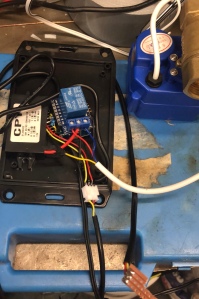The term ‘Cloud’ is still evolving. We are all trying to come to terms with the implications around this simple word, what it really means to our customers, to our businesses and to us as individuals. Frequently I hear clients say they want to ‘get to the cloud’ without knowing what they actually mean to achieve with this statement.
So, let’s break it down.
Challenges
Businesses face many challenges, some of them financial, others political, that all impact the best place to spend their budget to make the most impact. For public listed businesses, they have shareholders and investment analysts to placate. They need to be seen to be doing the right thing (returning on investment) while still growing their business and maintaining their image. They need to invest shrewdly , many times sticking to old faithful ‘safe’ options in favour of newer technologies that have never been used inside their own company. They can be risk-averse, but this comes with its own risks too, holding them back and making them spend money on maintaining the status quo. They have legacy systems that teams of people support, that they pay vendors large sums of money to maintain. These are not going away overnight. Do they have the funds to re-architect the legacy systems onto a new platform? Do they really want to, or even need to?
Other businesses seem to go the other way. They jump on every bandwagon that comes along, being ‘early adopters’ of each bleeding-edge technology before they even know what business problem they are trying to solve with it, or if it can even solve a problem they may ever experience.
These all lead to a confusion around what ‘cloud’ can be to them and how it can assist, or hinder, their business processes.
A march into the clouds
Here is a definition of ‘cloud’ that I prefer:
Cloud is a concept, one that encompasses
- process
- automation
- orchestration
- compliance
- federation
- cost reduction
- self service
- flexibility
- complexity reduction
which all come together to provide a service that the business can consume at a rate and cost that suits their speed of business.
(Note here that I say ‘business’ – there is no mention of IT yet. Business should lead the adoption of IT, not adjust their business processes to fit around the latest greatest product the IT department have found.)
The outcome should be that the business can move quickly and decisively, without the delays inherently seen with deliving supporting services. These services don’t need to be IT-related, they could be around human resources or facilities management. However, most revolve around an IT-based service at some point, so we’ll keep on track here.
I’m off to the cloud – what do I do next?
Deciding to start on the journey to cloud is just one small step forward. After all, everyone is doing it so it must be the right thing, right?
Stop, take a step back. Look at your business, at the processes and procedures that are the bedrock that holds it together. What business requirements are you trying to address with your cloud initiative? What problems are you trying to solve? Just moving things into the cloud isn’t an answer to a business need, it is the ‘bandwagon’ mentality. Evaluate what you need to solve. Is there a true need to embrace a full cloud initiative, or are you not even at the first step towards virtualisation in your own environment? What does the business think about your cloud move – are they happy that you are moving them to a cloud? What SLA/OLA requirements do you have around the services that you want to migrate? Will a cloud strategy still address them so that your business can carry on, or are you going to impact them, causing costs and business impact? Can a service provider, whether that is your own internal IT department or an external provider, deliver the levels of service and availiability that your business (not your IT department) truly demand?
If you are at this stage, engage a professional to assist you. Choose an independent, someone with a track record, someone who is not aligned to a vendor/provider/technology, someone who has experience of your line of business. Run yourselves a workshop, involve your line of business leaders. Make sure the decisions are being made by the right people, those who depend on the service you are going to change, those that use it every day. They will tell you their true business requirements. Use these as the basis for your discovery process, making sure to keep everything documented, the reasons why a certain business needs the SLA/OLA they ask for. Ensure they understand how each step they move towards higher availability also moves them a step up the cost ladder.
This is just a bit of a brain dump from me tonight as I sit here in my hotel room contemplating my navel (it has lint in it, where did that come from??). I’ll add more to this in the coming days/weeks.


